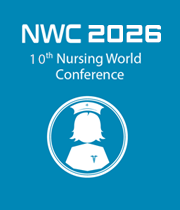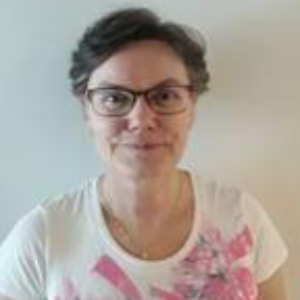Title : CHARIMUS ERGO SERVAMUS – Giving hope is to care and to care is to serve
Abstract:
Introduction: ‘Viable’ can be seen as a concept referring to a matter of potentials and possibilities, something which can be created, developed and reached, a thing as a dynamic step further from a hypothesis or a theory. To be viable a subject matter must be evident and it has to aim at future. That involves a reasonable vision founded on a substantial theory or hypothesis worth of testing in practice – by applying, developing and re-researching. It also involves tools and resources which are not only finance, technology, leadership and people but a need of deep concern or strong will, too, as well as the ethos with head (knowledge), hand (skills) and heart (ethics).
Background: The starting point of this study is in our theoretical perspective of Eriksson’s Caritative Caring Theory with its cornerstones of the dignity of a patient, health, suffering and its alleviation. The study leans mainly on our earlier results which show how ethics, health and a caritative caring culture belong together. The more empirical basis of the study is founded on researches which focused on suffering from violence in intimate partner relationships, intervening in and alleviation of suffering, and hope as an essential part of health and caring.
Purpose: The purpose of this study is to show how viable quality health care can be pursued in a hospital.
Research: In what ways can we create, advance and maintain viable quality health care in everyday caring?
Methodology and Methods: The methodology of this study is based on Gadamer’s hermeneutical philosophy. The method used is hermeneutical interpretation.
Results: It is possible to create, advance and maintain viable quality health care in everyday caring by making caritative caring theory and ethics revived and revivified in practice. It means a continuous dialogue between nurses and researchers and an inward sense of caring ethics of the whole personnel in a hospital, and a brave and a crucial leap from words into living ethics.
Caritative caring ethics is “here and now” which means its constant presence and use in everyday caring. It becomes visible and evident in every single moment in a caring relationship from the first encounter to the last one between a nurse and a patient. A caring model for patients suffering from intimate partner violence is a concrete result of this study and can be seen as viable – i.e. visible, evident and sustainable - and as a caring of high quality. The model is founded on new and fresh ethical thinking and continuous up-to-date caritative care from the first aid to the discharge of a patient. This study give rise to a deeper understanding of hope as a way to health and caring as serving.
Conclusions: Continuous dialogue and multi professional co-operation is still needed among hospital staff. Health care personnel’s knowledge of and understanding for science, theory and their own work can be increased and strengthened through participation in researches and development projects. This can support the basic values, central tasks, visions, methods and strategies in caring praxis and develop the “know-how” and viable, ethical caring cultures for the patients’ best.
Audience Take Away:
First, by getting knowledge of the concept, of the meaning and of the content of ‘caritas’ the audience will get deeper understanding of the core and the substance of caritative caring. Second, via this knowledge, and with the help of the caring model for the patients who suffer from violence in their intimate partner relationships, the audience may begin to look at its work in a fresh way by seeing how a theory and caring ethics is possible to revive and revivify in everyday caring, and how viable quality health care could be reached in practice. The audience may see the meaning and value of continuous dialogues and co-operation between researches and different occupational groups in a hospital aiming towards their common goal: the patients’ best.
The audience can make their work evident, i.e. they can connect their heads (theory, knowledge), their hands (practice, aesthetics) and their hearts (ethics, beauty) with the help of new thinking, understanding, visions and courage to look further, to develop their own work, to create multi professional teams and to start co-operative projects in order to pursue viable quality health care which is visible, evident and sustainable in their everyday work.
It is possible that also other faculty and/or different caring contexts can apply the caritative Caring Theory and the caring model in their own contexts, e.g. because ethics is universal and always present with its everlasting values, like the dignity of human beings.
It is also possible that this presentation may provide a practical solution to problems and simplify or make a designer’s job more efficient because the caring model for patients who suffer from violence in their intimate partner relationships provides an equal and fair way to the whole staff to care of those patients, e.g. by giving knowledge and courage to intervene in violence. It also gives an equal and fair treatment for all those patients because it is not dependent on any caring context, or ward or a separate worker and their courage, knowledge and other skills.



